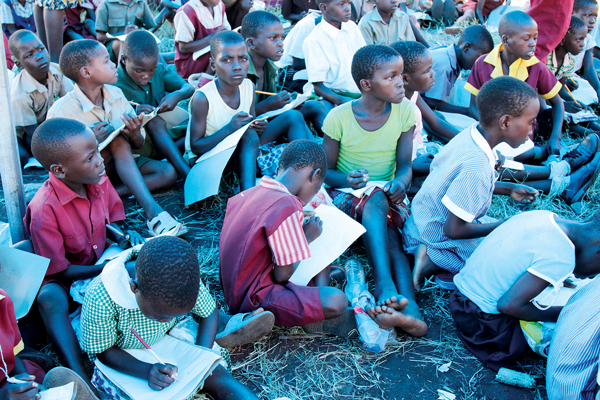
The challenge of rapid population growth does not seem like a new concept. The hope within it for a better future, however, might be.
Guest column: Mercia Takavarasha
Education on a global scale is facing an undeniable crisis – the gap between teachers available and teachers needed is growing year after year.
As the global population continues to rise at a staggering rate, it’s estimated that the world is currently short of 69 million teachers if we are to reach United Nations Educational, Scientific and Cultural Organisation’s 2030 education goals.
Having been born and raised in Africa, the challenges that surround population growth – especially in contexts facing vulnerable populations like the one in which I grew up in Zimbabwe – are familiar news. Yet, the figures continue to surprise me.
Within 30 years, Africa will account for more than half of the world’s population growth according to a recent United Nations study.
By that same time, the continent will be home to over one billion youths under the age of 18.
It is no surprise that the future of these young people is of great concern for African leaders as well as local teachers, heads of communities, and parents who recognise that with more people, comes a greater need.
- Chamisa under fire over US$120K donation
- Mavhunga puts DeMbare into Chibuku quarterfinals
- Pension funds bet on Cabora Bassa oilfields
- Councils defy govt fire tender directive
Keep Reading
I have worked with children for over 22 years – one of my driving passions is leaving an impact on the young minds that will shape and mould our future.
From teaching myself in a classroom in Zimbabwe to working with and alongside teachers and students around Africa and the world through Generations For Peace, my eyes have always been set on our future, and my heart on those in whose hands it rests.
As teachers, transforming the difficulties that come with an ever more quickly growing population into a hope for a stronger future lies largely with us.
The fact that the world is short of 69 million teachers does not imply a lack of people available to teach: it means instead a lack of students motivated to pursue teaching.
With rising populations in Africa and around the globe, we are being presented with millions of potential future teachers who can shape the immediate and longer-term future of our planet through education. Yet we remain in need of those willing to take on the task.
Why is that?
The obstacles teachers today must overcome in order to be successful are daunting.
Especially in rural or remote areas like those in which I taught in Zimbabwe, teachers face everything from limited resources and low pay, to a narrow range of extracurricular opportunities and often an unsupportive administration.
I was initially surprised at the array of challenges I faced when I began my teaching career, but I was even more shocked when I later learned that those same challenges are still at the forefront of the minds of today’s teachers, regardless of the nature of their context and the development of curricula.
The teachers I have the opportunity to work with as we implement peace-building programmes today span in the sub-Saharan Africa, in various urban and rural settings within countries like Uganda, Ghana, Sierra Leone, Nigeria and more.
Across and within each of these locations are schools facing similar, if not the same challenges I came up against when I was teaching at a secondary school years ago – challenges that often centre around rural or remote areas, which account for more than 60% of sub-Saharan Africa’s population.
While we know that the world is trending toward urbanisation at an increasing rate, we must not forget that, globally, over half of the world’s population still lives in rural settings.
Though the youth being raised far from the metropolises that will dominate the future will one day likely lend to their overwhelming population, we as a global community must recognise and help teachers reaching those youths in remote communities now, in their current context.
Although the primary job of a teacher might be to help students learn and acquire knowledge, we must not limit the influence of their role to merely spreading it.
Instead, if we are to view the growing population through hopeful eyes as a growing number of future teachers, those situated to influence them in the classroom today must instil in their students a passion for both knowledge and the sharing of it, positioning them to pass it on to future generations.
In the face of challenges, both foreseen and unforeseen, today’s teachers must step up and seek to innovate learning within their own means; engage with students outside the classroom; understand not just the perspectives of their students, but also why they maintain as well as exercise compassion and understanding that defies and exceeds expectation.
By engaging deeply and sincerely exciting today’s students, our teachers have the opportunity to shape the largest population of educators our world has ever seen.












